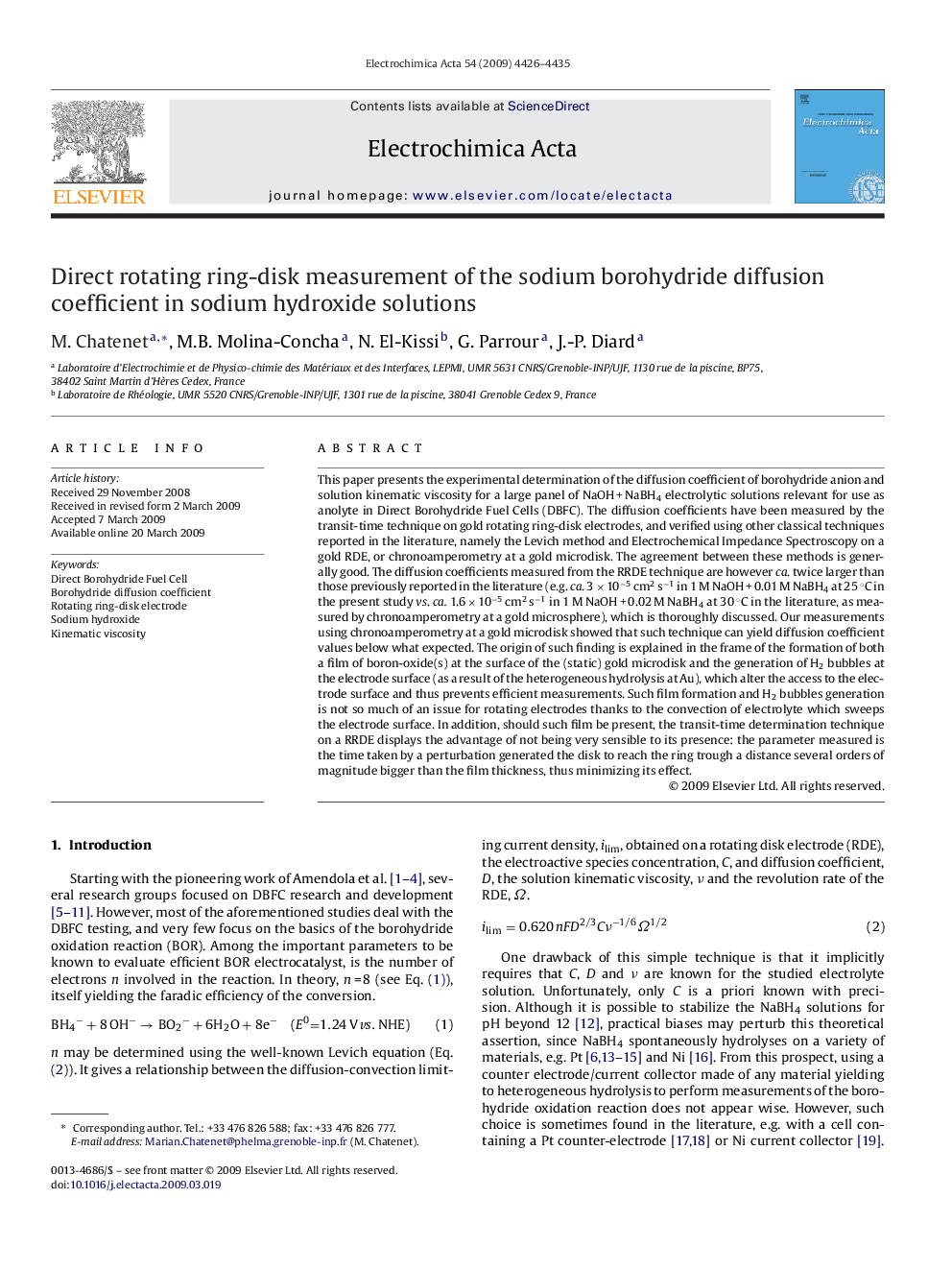| Article ID | Journal | Published Year | Pages | File Type |
|---|---|---|---|---|
| 193618 | Electrochimica Acta | 2009 | 10 Pages |
This paper presents the experimental determination of the diffusion coefficient of borohydride anion and solution kinematic viscosity for a large panel of NaOH + NaBH4 electrolytic solutions relevant for use as anolyte in Direct Borohydride Fuel Cells (DBFC). The diffusion coefficients have been measured by the transit-time technique on gold rotating ring-disk electrodes, and verified using other classical techniques reported in the literature, namely the Levich method and Electrochemical Impedance Spectroscopy on a gold RDE, or chronoamperometry at a gold microdisk. The agreement between these methods is generally good. The diffusion coefficients measured from the RRDE technique are however ca. twice larger than those previously reported in the literature (e.g. ca. 3 × 10−5 cm2 s−1 in 1 M NaOH + 0.01 M NaBH4 at 25 °C in the present study vs. ca. 1.6 × 10−5 cm2 s−1 in 1 M NaOH + 0.02 M NaBH4 at 30 °C in the literature, as measured by chronoamperometry at a gold microsphere), which is thoroughly discussed. Our measurements using chronoamperometry at a gold microdisk showed that such technique can yield diffusion coefficient values below what expected. The origin of such finding is explained in the frame of the formation of both a film of boron-oxide(s) at the surface of the (static) gold microdisk and the generation of H2 bubbles at the electrode surface (as a result of the heterogeneous hydrolysis at Au), which alter the access to the electrode surface and thus prevents efficient measurements. Such film formation and H2 bubbles generation is not so much of an issue for rotating electrodes thanks to the convection of electrolyte which sweeps the electrode surface. In addition, should such film be present, the transit-time determination technique on a RRDE displays the advantage of not being very sensible to its presence: the parameter measured is the time taken by a perturbation generated the disk to reach the ring trough a distance several orders of magnitude bigger than the film thickness, thus minimizing its effect.
